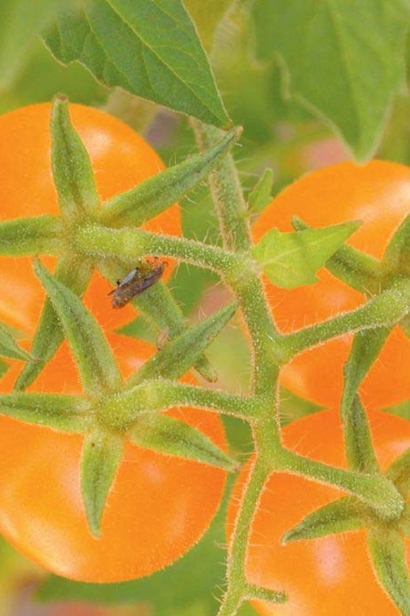Plants that Carry a Special Story
Heirloom Sale Continues to Blossom at UW-Green Bay
Each spring I look forward to planting a neat row of multiplying onions saved from the previous growing season — the variety my grandmother, Loretta LeRoy, planted. She had quite the green thumb, and I often wish I had the foresight to ask for some of her prolific Hen and Chicks that were always in abundance in her flower beds. There is something deeply personal about passing down plants and seeds referred to now as ‘Heirlooms.’
For the gardener who does not have seeds from past generations, a visit to the University of Wisconsin-Green Bay (UWGB) Natural and Applied Sciences Department’s 18th annual Heirloom Plant Sale is in order. The sale, May 17, in the Laboratory Science Greenhouse, offers an impressive selection of more than 50 pepper varieties and 70 tomato varieties, as well as eggplants, cucumbers, broccoli, lettuce, herbs — several unique basils — and flowers.
The Heirloom Plant Sale was started in 1997 by professor Jeff Nekola, pepper enthusiast and Seed Savers Exchange member. Nekola was saving and trading seeds long before it was popular. The Tobago Seasoning Pepper, developed at UWGB by Nekola, was a pepper he discovered at a market while on a school-sponsored trip to Trinidad and Tobago. Nekola brought back the seeds, grew them out, and stabilized the variety that is offered at the sale.
When people began asking Nekola to grow heirloom plants for them, he saw an opportunity to offer gardeners unique plants as well as fundraise for student research projects. He started with several dozen plants. The sale has grown exponentially each year thereafter, now offering between 6,000 and 10,000 plants grown by volunteers and a paid student intern.
Customer favorites include early tomatoes that provide a fast and brief supply of fruit in July, and specialties like the Wisconsin 55 tomato, the Wisconsin Lake bell pepper, and the Beaver Dam sweet pepper. The list includes ethnic varieties of tomatoes and peppers (Belgian, Czech, Russian, Polish, and French) from around the world in all different sizes and colors.
“Our focus is to get people to try new varieties to maintain the agriculture biodiversity ... and keep the plants in production. If people don’t continue to plant these plants, the varieties are going to die out. It is living seed so it has to be planted and shared every year,” said Vicki Medland, associate director of the Cofrin Center for Biodiversity and the sale’s manager. “I try to pick unique items you can’t find in stores and are adaptive to this climate.”
As people moved across the world, they traded seeds and interbred varieties to improve and develop flavors, colors, yields and hardiness. Some seed varieties are extinct because no one continued to save and plant them. Mass production of hybrid seeds has led to many improvements, including transportability and increased shelf life of vegetables, but some would argue it is at the expense of flavor and diversity.
Interest in preserving heirloom seeds has grown, although Native Americans as well as Amish and Mennonite groups have long carried on the practice. The ease of the Internet has help to connect people with seed-saving passions to trade and sell seeds. This is the case with Russian tomatoes new to the heritage seed scene.
Russian black tomatoes, such as Black Krim and Paul Robeson, are fascinating specimens. While they are not truly black — the color is produced by red flesh underneath a green outer layer — the tomatoes are big on flavor. The Paul Robeson is named after the opera singer and 1950’s equal rights and peace activist.
“He was an important humanitarian and famous in the United States from the movie ‘King Solomon’s Mines’ and was the famous voice for the song ‘Ol’ Man River’,” Medland said. “In Russia, he is idolized by his political activism.”
“We didn’t have many seeds until after the Soviet Union fell and opened up,” Medland said. “They do well in cold climates because they are from Russia and are a good fit for Northeastern Wisconsin. They are ugly so some people are put off by them, but they are a really good-tasting tomato.”
Whatever grabs the attention of gardeners — flavor, unusual shape, or just a chance to grow something different — all are invited to the sale. Despite the lore of long lines, Medland assures there are always enough plants for everyone. Numbers are handed out starting at 7:30 a.m.; the sale runs from 9 a.m. to 3 p.m. For more information, visit http://www.uwgb.edu/biodiversity/heirloom.






